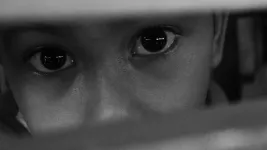INFORMATION:
Declining growth rates of global coral reef ecosystems
If trend of declining coral growth continues at the current rate, the world's coral reefs may cease calcifying around 2054
2021-06-10
(Press-News.org) If the trend of declining coral growth continues at the current rate, the world's coral reefs may cease calcifying around 2054, a new Southern Cross University study has found.
Drawing on research from the late 1960s until now, the paper published in Communications & Environment reveals the global spatiotemporal trends and drivers of coral reef ecosystem growth (known as calcification).
One hundred and sixteen studies from 53 published papers were analysed.
"It is known that coral reefs have been degrading over time. Our study relies on historical data to quantify the current rate of decline and indicates what could be happening in the future," said project leader Dr Kay Davis.
"Our work complements quite a few other studies that indicate net coral reef dissolution by mid-century, between 2030 and 2080."
Case studies were of sites from all over the globe. The most studied country was Australia (Great Barrier Reef, Lord Howe Island and Western Australia reefs). Other case studies included reef sites in Japan, Hawaii, the Red Sea, French Polynesia and Bermuda, among others.
"Repeat observations at the same sites can provide insight into how coral reefs are responding to changing environmental conditions on a global scale," Dr Davis said.
"But these repeat surveys of calcification and productivity have only been carried out at seven sites."
Declining coral cover and declining health of the remaining coral may be contributing to reduce global calcification rates.
"We found that rates of coral ecosystem calcification are significantly declining at an average rate of 4.3% ± 1.9% yr-1 with a concurrent reduction in mean coral cover of 1.8% yr-1. This suggests that loss of coral cover may not be the sole contributor of declining calcification," said Dr Davis.
"Stress events, like coral bleaching, can impact calcification, even without coral death. Corals improve their chances of survival during stressful times by temporarily reducing calcification."
To sustain coral reefs, individual corals need to grow to provide food and habitat for the ecosystem. Coral growth is called 'calcification'. As corals take up calcium carbonate (CaCO3) from the water column to produce their skeletons, calcification rates can be determined through water chemistry changes.
Coral dissolution is the opposite, where the skeletons release CaCO3 back into the water, typically in periods of no productivity or when stressed. The higher the rate of net growth (calcification- dissolution), the more reef-building corals and calcifying algae are producing for the ecosystem.
The University's National Marine Science Centre in Coffs Harbour has unique analytical infrastructure to detect subtle changes in seawater chemistry required to quantify coral reef ecosystem calcification.
ELSE PRESS RELEASES FROM THIS DATE:
COVID-19 vaccine hesitancy among patients with breast cancer
2021-06-10
What The Study Did: This survey study among women with breast cancer in Mexico evaluates their specific concerns about and high hesitancy rate toward COVID-19 vaccination.
Authors: Cynthia Villarreal-Garza, M.D., D.Sc., of the Breast Cancer Center, Hospital Zambrano Hellion TecSalud in Nuevo León, Mexico, is the corresponding author.
To access the embargoed study: Visit our For The Media website at this link https://media.jamanetwork.com/
(doi:10.1001/jamaoncol.2021.1962)
Editor's Note: The article includes conflict of interest disclosures. Please see the article for additional information, including other authors, author contributions and affiliations, conflict of interest and financial disclosures, and funding and support.
INFORMATION:
Media advisory: The ...
Incidence of multisystem inflammatory syndrome in children among people with SARS-CoV-2 infection in US
2021-06-10
What The Study Did: The incidence of multisystem inflammatory syndrome in children (MIS-C) among people with SARS-CoV-2 infection in the United States was estimated in this study.
Authors: Angela P. Campbell, M.D., M.P.H., of the COVID-19 Response Team at the U.S. Centers for Disease Control and Prevention in Atlanta, was the corresponding author.
To access the embargoed study: Visit our For The Media website at this link https://media.jamanetwork.com/
(doi:10.1001/jamanetworkopen.2021.16420)
Editor's Note: The article includes conflict of interest and funding/support ...
Hush little baby don't say a word...
2021-06-10
Children with documented child protection concerns are four times as likely to die before they reach their 16th birthday, according to confronting new research from the University of South Australia.
The world first study identifies the extreme seriousness of familial child abuse and neglect, measuring for the first time the excess risk of death that children with documented child protection concerns face.
Child abuse and neglect are prominent worldwide public health concerns affecting 20-50 per cent of children worldwide. In Australia, 20-25 per cent of children endure child maltreatment.
Published in JAMA Network Open today, the study analysed deidentified data ...
Combination targeted therapy provides durable remission for patients with CLL
2021-06-10
A combination of ibrutinib and venetoclax was found to provide lasting disease remission in patients with newly diagnosed chronic lymphocytic leukemia (CLL), according to researchers at The University of Texas MD Anderson Cancer Center. Findings from the single-institution Phase II study were published today in JAMA Oncology and provide the longest follow-up data on patients treated with this drug regimen.
Lead researchers included Nitin Jain, M.D., associate professor of Leukemia, William Wierda, M.D., Ph.D., professor of Leukemia; and Varsha Gandhi, Ph.D., department chair ad interim of Experimental Therapeutics.
MD Anderson researchers previously reported results from this study showing that ibrutinib ...
Microscopic imaging without a microscope?
2021-06-10
The 30,000 or so genes making up the human genome contain the instructions vital to life. Yet each of our cells expresses only a subset of these genes in their daily functioning. The difference between a heart cell and a liver cell, for example, is determined by which genes are expressed--and the correct expression of genes can mean the difference between health and disease.
Until recently, researchers investigating the genes underlying disease have been limited because traditional imaging techniques only allow for the study of a handful of genes at a time.
A new technique developed by Jun Hee Lee, Ph.D., and his team at the University of Michigan Medical School, part of Michigan Medicine, uses high-throughput ...
Could neutrophils be the secret to cancer's Achilles' heel?
2021-06-10
A study published in the June 10, 2021 issue of Cell describes a remarkable new mechanism by which the body's own immune system can eliminate cancer cells without damaging host cells. The findings have the potential to develop first-in-class medicines that are designed to be selective for cancer cells and non-toxic to normal cells and tissues. If successful, this discovery may improve the practice of precision medicine by ensuring the right drug is delivered at the right dose at the right time.
Our immune system plays a critical role in our ability to fight off diseases ...
Tuning the energy gap: A novel approach for organic semiconductors
2021-06-10
Organic semiconductors have earned a reputation as energy efficient materials in organic light emitting diodes (OLEDs) that are employed in large area displays. In these and in other applications, such as solar cells, a key parameter is the energy gap between electronic states. It determines the wavelength of the light that is emitted or absorbed. The continuous adjustability of this energy gap is desirable. Indeed, for inorganic materials an appropriate method already exists - the so-called blending. It is based on engineering the band gap by substituting atoms in the material. This allows for a continuous tunability as, for example in aluminum gallium arsenide semiconductors. Unfortunately, this is not transferable to organic semiconductors ...
Soot from heaters and traffic is not just a local problem
2021-06-10
Leipzig. Soot particles from oil and wood heating systems as well as road traffic can pollute the air in Europe on a much larger scale than previously assumed. This is what researchers from the Leibniz Institute for Tropospheric Research (TROPOS) conclude from a measurement campaign in the Thuringian Forest in Germany. The evaluation of the sources showed that about half of the soot particles came from the surrounding area and the other half from long distances. From the researchers' point of view, this underlines the need to further reduce emissions of soot that ...
Discovery of ray sperms' unique swimming motion and demonstration with bio-inspired robot
2021-06-10
It is generally agreed that sperms "swim" by beating or rotating their soft tails. However, a research team led by scientists from City University of Hong Kong (CityU) has discovered that ray sperms move by rotating both the tail and the head. The team further investigated the motion pattern and demonstrated it with a robot. Their study has expanded the knowledge on the microorganisms' motion and provided inspiration for robot engineering design.
The research is co-led by Dr Shen Yajing, Associate Professor from CityU's Department of Biomedical Engineering (BME), and Dr Shi Jiahai, Assistant Professor of the Department of Biomedical Sciences (BMS). Their findings have been published in ...
Molecular coating enhances organic solar cells
2021-06-10
An electrode coating just one molecule thick can significantly enhance the performance of an organic photovoltaic cell, KAUST researchers have found. The coating outperforms the leading material currently used for this task and may pave the way for improvements in other devices that rely on organic molecules, such as light-emitting diodes and photodetectors.
Unlike the most common photovoltaic cells that use crystalline silicon to harvest light, organic photovoltaic cells (OPVs) rely on a light-absorbing layer of carbon-based molecules. Although OPVs cannot yet rival the performance of silicon cells, they could be easier and cheaper to manufacture at a very large scale using ...
LAST 30 PRESS RELEASES:
Numbers in our sights affect how we perceive space
SIMJ announces global collaborative book project in commemoration of its 75th anniversary
Air pollution exposure and birth weight
Obstructive sleep apnea risk and mental health conditions among older adults
How talking slows eye movements behind the wheel
The Ceramic Society of Japan’s Oxoate Ceramics Research Association launches new international book project
Heart-brain connection: international study reveals the role of the vagus nerve in keeping the heart young
Researchers identify Rb1 as a predictive biomarker for a new therapeutic strategy in some breast cancers
Survey reveals ethical gaps slowing AI adoption in pediatric surgery
Stimulant ADHD medications work differently than thought
AI overestimates how smart people are, according to HSE economists
HSE researchers create genome-wide map of quadruplexes
Scientists boost cell "powerhouses" to burn more calories
Automatic label checking: The missing step in making reliable medical AI
Low daily alcohol intake linked to 50% heightened mouth cancer risk in India
American Meteorological Society announces Rick Spinrad as 2026 President-Elect
Biomass-based carbon capture spotlighted in newly released global climate webinar recording
Illuminating invisible nano pollutants: advanced bioimaging tracks the full journey of emerging nanoscale contaminants in living systems
How does age affect recovery from spinal cord injury?
Novel AI tool offers prognosis for patients with head and neck cancer
Fathers’ microplastic exposure tied to their children’s metabolic problems
Research validates laboratory model for studying high-grade serous ovarian cancer
SIR 2026 delivers transformative breakthroughs in minimally invasive medicine to improve patient care
Stem Cell Reports most downloaded papers of 2025 highlight the breadth and impact of stem cell research
Oxford-led study estimates NHS spends around 3% of its primary and secondary care budget on the health impacts of heat and cold in England
A researcher’s long quest leads to a smart composite breakthrough
Urban wild bees act as “microbial sensors” of city health.
New study finds where you live affects recovery after a hip fracture
Forecasting the impact of fully automated vehicle adoption on US road traffic injuries
Alcohol-related hospitalizations from 2016 to 2022
[Press-News.org] Declining growth rates of global coral reef ecosystemsIf trend of declining coral growth continues at the current rate, the world's coral reefs may cease calcifying around 2054



